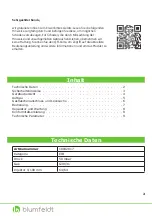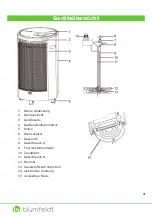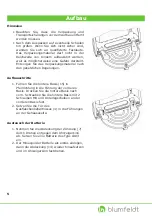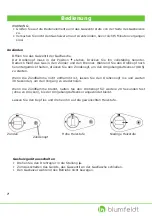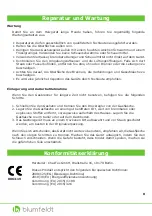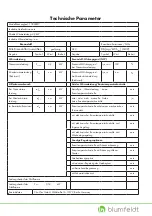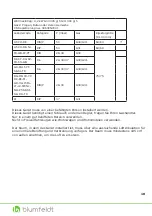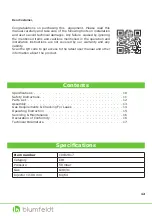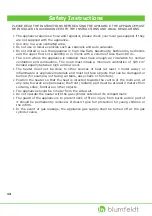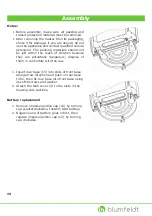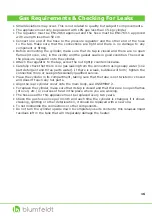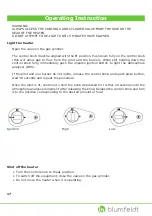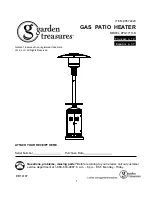
Gas Requirements & Checking For Leaks
•
Small deviations may occur. This is not related to quality but subject to improvements.
•
The appliance must only be powered with LPG gas less than 15-kg cylinder.
•
The regulator must be EN12864 approved and the hose must be EN1763-1 approved
with a length less than 50 cm.
•
Connect one end of the hose to the pressure regulator and the other end of the hose
to the tap. Make sure that the connections are tight and there is no damage to any
component or fitting.
•
Before connecting the cylinder, make sure that its tap is closed and there are no open
flames (lit oven, etc.) in the vicinity and the gasket seal is in good condition. Then screw
the pressure regulator onto the cylinder.
•
Attach the regulator to the tap, screw the nut tightly counterclockwise.
•
Carefully check that there is no gas leaking from the connection using soapy water (one
part detergent and three parts water). If there is a leak, bubbles will form; tighten the
connection more or seek professionally qualified service.
•
Place the cylinder in its compartment, taking care that the tube is not twisted or choked
and doesn’t touch any hot parts.
•
Align the rear cylinder cover onto the main body, see ASSEMBLY 2.
•
To replace the cylinder, make sure that its tap is closed and that there are no open flames
(lit oven, etc.) or sources of heat in the place where you are working.
•
The hose used for this appliance must be replaced every two years.
•
Check the gas hose once per month and each time the cylinder is changed, if it shows
cracking, splitting or other deterioration, it should be replaced with a new one.
•
To not mishandle the connections or other components.
•
Do not turn the cylinder upside down to completely use its contents: this releases liquid
residues left in the tank that will irreparably damage the heater.
16


